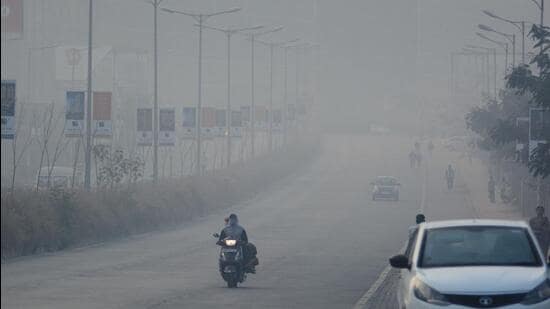Infection
Cases of eye infections on the rise as Pune’s air quality deteriorates
A layer of white smog (smoke and fog) with a combination of dust has resulted in a significant increase in air pollution in the city
PUNE Ophthalmologist are reporting more cases of allergic conjunctivitis as the city’s air pollution levels rise. The city’s air quality has been as been deteriorating as the overall air quality index is above 100.
A layer of white smog (smoke and fog) with a combination of dust has resulted in a significant increase in air pollution in the city. As per the IITM monitoring data, the city is experiencing moderate air quality with an overall Air Quality Index (AQI) of 125.
As per the SAFAR-IITM data, the Air Quality Index (AQI) in Pune has increased from 57 on October 1 to 125 on October 22 i.e. from satisfactory to moderate level. The highest AQI was recorded on October 18 at 143.
Simultaneously, a visible layer of smog can be seen in both the early morning and the evening time giving a winter-like feel of fog. However, citizens who have been exposed to this smog for a long time while doing morning exercise or driving are experiencing irritation as well as redness in the eyes.
Dr Santosh Bhide, state president of the Maharashtra Optimology Society, who also practices at Jangli Maharaj Road area, said, ”Pollution is causing irritation and redness in the eyes. Generally, there is dust in the air, additionally, many vehicles are travelling on the road causing harmful emissions to the environment. We are experiencing smog-like conditions in many areas. We have seen almost a 50% rise in cases in October.”
“People must use protective gear while driving to safeguard their eyes,” he said.
Dr Anil Dudhbhate, ophthalmologist, Dudhbhate Ophthalmology, and Retina Centre, Sinhagad Road, said, that we are seeing an increase in patients with both allergic and spring conjunctivitis.
“Every day there are at least 8 to 10 patients with such complaints at our facility. This mainly happens when there is seasonal change,” he said.
This smog in the city is also creating problems for visibility to some extent. “With the withdrawal of the southwest monsoon, night temperatures dropped due to clear sky conditions leading to a ground-based stable layer that traps emitted pollutants thus increasing AQI to moderate. In the absence of rain, the soil becomes dry and the dust on the ground gets lifted due to vehicular movement that causes a reduction in visibility,” said BS Murthy, project director, SAFAR, IITM.
“There would be several reasons contributing to the increase in night temperatures and major construction activity going on across the city because of which the pollutants remain suspended in the air forming a haze. This has affected citizens’ health adversely and doctor visits are on the rise. This is likely to worsen in the winter months and the city needs to be prepared to implement the graded response action plan ( GRAP) which curbs certain polluting activities, said Sharmila Dev, senior programme associate, Parisar.
 Subscribe today by clicking the link and stay updated with the latest news!” Click here!
Subscribe today by clicking the link and stay updated with the latest news!” Click here!
